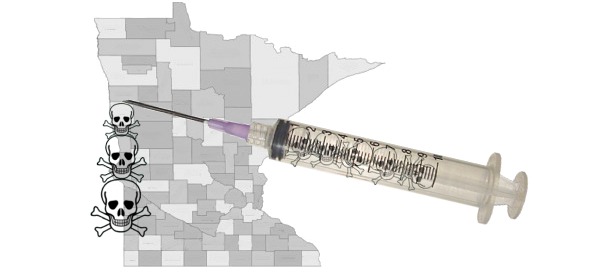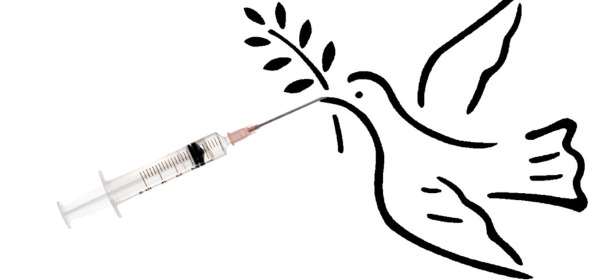Featured
Major Yeast Infection Drug Causes Birth Defects: Natural Remedies Better
The FDA admits Diflucan causes birth defects. When you consider that natural fungal treatments are often more effective and always safer, why would you use the drug? (Includes natural solutions for fungal/candida infections.)
by Heidi Stevenson
It should come as no surprise that Diflucon (fluconazole) has been found to cause birth defects. Probably the most commonly prescribed drug for yeast infections has been on the market for over 22 years. Yet, though it contains an element that is known to cause birth defects, the FDA has taken all that time to figure out how dangerous it is.
According to the FDA, the defects seen in babies born to mothers exposed during the first three months of pregnancy may suffer from:
- Short, broad head
- Abnormal-looking face
- Abnormal skull development
- Cleft palate
- Bowing of thigh bones
- Thin rib and long bones
- Muscle weakness
- Joint deformities
- Congenital heart disease
The FDA admits to only five known cases of birth defects from Diflucan exposure. However, there is good reason to believe that the number is much higher. This tragedy was predictable:
Fluconazole contains fluorine, an element that is known to be highly toxic, and also known to cause exactly the same symptoms that the FDA has acknowledged are caused by the drug.
In typical FDA fashion, though, the profits of its manufacturer, Pfizer, were treated as more important than the predictable harm caused by its drug. The idea that caution should be exercised in the introduction of new drugs is a concept that’s never caught on in drug regulatory agencies.
Cause of Most Fungal Infections
Yeast infections were not always so common. Antibiotics and high blood sugar have massively increased their incidence. Most women experience yeast infections following courses of the drugs. Yeast is a common name for Candida albicans, a fungus commonly found in our bodies. It generally causes no problems while a normal balance of bacteria is maintained.
However, antibiotics tend to wipe out large masses of bacteria, the good along with the bad. Normal bacteria in our bodies generally keep fungal infections at bay. However, when bacteria are killed off, fungus runs rampant, creating the well-known symptoms of burning (sometimes itching), inflammation, and vaginal discharge.
Vaginal yeast infections are the most well known, but yeast infections are found all over the body. Men can suffer from the equivalent genital infection. It commonly infects the skin and athlete’s foot is a fungal infection, too. Thrush, a yeast infection in the mouth, produces a characteristic snow white coating on the tongue. There is even some indication that fungal infections may be behind some cancers.
Natural Yeast Treatments
Obviously, yeast infections can be debilitating and need to be taken seriously. What’s a person with a yeast infection to do?
Frankly, this is a good opportunity to learn that natural approaches are often more effective than Big Pharma’s drugs—and certainly nearly always far safer. We have three suggestions to try: boric acid, yogurt, and beta carotene. You might be amazed at how effective they can be. My own favorite, beta carotene, was permanently effective after years of chronic yeast infections.
Boric Acid
Boric acid has been found to be more effective than Diflucan! All the records of a vaginitis clinic between 1989 and 1994 were checked. Patients who’d used boric acid suppositories for 14 days were improved or cured 81% of the time, while the rate in those who had Diflucan treatment was 77%.
However, it needs to be understood that there are risks associated with it, so treatment must be done carefully and properly:
Boric acid is a poison if ingested or absorbed through an open wound. Therefore, if there’s any chance you may have a vaginal lesion, do not use boric acid.
Before using it vaginally, try applying a very small quantity in the genital area to see if there’s any unpleasant sensation. If there is, you can treat it by applying vitamin E, which should rapidly sooth it. Though most people are not bothered by the application explained below, a few are. Therefore, it’s important to proceed with caution.
If you can obtain pre-made boric acid suppositories, that would be the simplest approach. However, the best source is compounding pharmacies, but they’re becoming more and more scarce as the FDA has been attacking them. Therefore, you may need to make your own.
Fortunately, that isn’t hard to do. You’ll need size 00 gel capsules. This is very important, because non-gel capsules will not dissolve in the vagina. Then, you must obtain some boric acid. It’s a clear crystal, but you’ll find it in the form of a white powder.
Are you familiar with Borax? It’s pure boric acid. It has a multitude of uses, including cleaning and pest control. Clearly, you want the highest grade of boric acid you can find. Therefore, you should purchase boric acid that’s sold for cooking.
Some drugstores carry boric acid. Supermarkets often do, but it’s usually sold for cleaning or as a pesticide there, so be careful to assure that you purchase food-grade boric acid. Both suitable boric acid and size 00 gel capsules can be found online quite easily.
You should, of course, wash your hands and prepare the suppositories in a clean environment.
You should put about 600 milligrams of boric acid powder in a 00 gel capsule. Measuring isn’t particularly important, because that’s about the amount the capsule holds.
To use, simply insert the boric acid suppository you’ve made into your vagina and lie down for at least half an hour—or use it at bedtime. Of course, it can be a bit messy—but is nowhere near as messy as old prescription type antifungal treatments.
If you experience discomfort, you can use vitamin E oil to alleviate it. Just poke a hole in a vitamin E gelcap and apply it.
The boric acid suppository treatment may be repeated for 14 days.
Of course, the FDA says that there’s no proof that boric acid is either effective or safe as an antifungal agent. You can do whatever you choose with that advice.
The Yogurt Treatment
Aside from eating yogurt, there’s a more direct approach to treating vaginal infections with it. Simply dip a tampon into yogurt and insert it into the vagina. You can repeat this method as often as you like.
There’s a certain elegance about the yogurt suppository approach. It helps restore the natural balance of probacteria. So, rather than poisoning the excess yeast, it’s outcompeted.
You must, of course, be sure to use only natural yogurt—no flavors and no chemicals, nothing but milk and probiotics. Assure that it contains live bacteria culture. Most of what’s sold in supermarkets contains dead bacteria, which will not do any good at all.
If you find that it doesn’t work, consider trying another type of yogurt, as different varieties are made with different bacterial cultures.
Beta Carotene
Beta carotene is my personal favorite treatment for vaginal yeast infections. How it works, I cannot say. It did wonders for me after years of problems—and prevented the development of new yeast infections even when antibiotics were taken. I’ve seen it work in several other women. Of course, this doesn’t rise to the level of a scientific study—but apparently it works for some women and it isn’t harmful.
First, be aware that beta carotene does not work overnight. It takes time. Allow a minimum of a month to see results. The method is quite simple: Take 75,000 IUs (45 milligrams) of beta carotene a day. Do not take Vitamin A, as it can be toxic. Your body will convert as much of the beta carotene into Vitamin A as it can use, and no more than that.
You may also eat a diet high in beta carotene, though it would probably require going on a juicing diet to get enough. If, though, that’s your preferred approach—and it’s certainly the healthiest one!—the veggies you need to focus on are generally dark green, cruciferous, or orange in color. Examples include broccoli, carrots, sweet potatoes, and winter squashes. For more info on beta carotene and sources for it, see altMD’s information.
Vitamin A, in the form of beta carotene, has the ability to restore the natural vaginal biota and to fortify the system so that it can adjust and resist when destructive drugs interfere with the balance. It’s a nutrient, not a drug, and provides benefits to the entire body. Perhaps fungal infections can be thought of as partly the result of a Vitamin A deficiency.
Big Pharma’s Drugs Versus Natural Treatments
As can be seen with Diflucan, not only are we exposed to unacceptable risks from drugs, but natural, safe, often more effective, and always far less costly treatments are ignored to push those drugs on us. Isn’t it obvious, though, that you’re better off trying natural treatments first?
Photo Courtesy of Nutdanai Apikhomboonwaroot / FreeDigitalPhotos
Tagged alternative medicine, big pharma, birth defects, candida natural treatments, conventional medicine, diflucon birth defects, diflucon fluorine, fluconazole birth defects, fluconazone fluorine, fungal infection natural treatments, fungal non-toxic treatments, modern medicine, pharmaceutical drugs, pharmaceuticals















Pingback: The Next Big Thing in Medicine: Managing Symbiotic Microbes Like Forests | Gaia Health